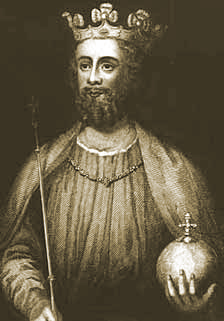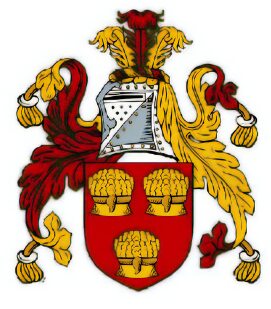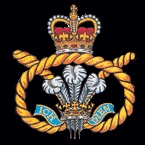
So Club night on Thursday, Paul Waechter from Red Dog of War comes over to demonstrate Saga. Great game, but where do I write it up? Settled in the end for Wargames Obsession rather than Trouble in the Border Provinces, as it is more historical than fantasy. Or is it? Historical fantasy? No magic, so it must be history. Skirmish based, with a twist.
Anyhow, plenty out there about the game play, e.g. at Meeples and Miniatures
Paul got to deploy and attack first. Obviously the Viking raiding force was spotted before it reached its intended victims.
A delightful game. I had a great time. So here goes:
Manus Franssohn stood in the fir forest, surrounded by his Hearth guard. Gnarled veterans of many a Viking raid, they stood impassively watching the Normans forces on the plain below them. They watched as a line of bowmen trotted out, and spread out, abreast, several units of cavalry lined up behind them. Manus himself was an inexperienced leader. He had been on several campaigns before, a hardened warrior, but he had never been in command of a full Viking Raiding party.
The element of surprise has obviously been lost, as it looks as the Normans were fully expecting the Vikings.
"Ah well, either way we win! We'll either be eating off Normal silver tonight or dining with Odin at the tables of Valhalla! He'd made a sacrifice before they'd set out in their longboat to Odin, Freya and Loki, just in case. The gods will smile on us today anyhow..."
Next thing a unit of crossbowmen arrived in the forest clearing. Now that could mean trouble.
" Send word to Svenson that they should attack those crossbowmen first!. Those crossbow bolts can punch right through your shield!" He added: " Leave the horsemen to us" He grinned at Olaf Bjornsson, who was sharpening his axe with a whetstone
Turn one saw the Normans move into position, getting their archers and crossbow men ready to rain destruction on the tightly packed Viking ranks. A horn blew from the Norman side, and the Vikings crouched down, shields at the ready and awaiting the hail of arrows and the thunder of hooves. They could hear the slap of leather and the clinking of chain mail. The Norman crossbowmen received orders, the unit activated! Manus saw them taking bead on his warriors out in the open. "Odin!" he bellowed. His trumpeter blew a long note on his horn.

The Norman crossbowmen archers lost their nerve, and milled about in confusion. Reforming, but not a single arrow was launched. They glanced about nervously. Where was the attack coming from, the forest?
They'd never heard such a sound, and fear and superstition gripped them, and they lost their concentration, fumbling with their crossbows.
Not even the light cavalry riding up behind them could bolster their courage. The moment was lost...

Svenson and his men lost no time in their turn, charging in full tilt! Calling on the Viking gods, they tore into the ranks of Crossbowmen. By the end of the turn only three were standing. They fled to the comparative safety of a nearby forest. A couple of warriors left for Valhalla.
Manus and his Hirdmen loped out their forest cover towards the approaching cavalry, keeping an eye on the warriors, in case they get into strife. They seem to be enjoying themselves, Olaf smirked, banging his axe against his shield." When's our time? "
The Norman cavalry charged in, shields and lances at the ready. " Now Olaf! Steady boys, go for the horses' legs. A legless horse can't run! The Viking Hirdmen broke into a trot, shields at the ready.
Faced with two targets the Norman cavalry commander chose to avoid the onrushing Hirdmen, deftly wheeling his light cavalry out of reach of the Hirdmen, and ploughing into the warriors.
"Loki!" whispered Manus. "Send help ! "

" Help us, Loki!" A pack of wolves fell upon the terrified crossbowmen hiding in the forest, ripping them to shreds. "Never underestimate the power of the Viking Gods! He sent his son, Fenris! We all live for war! It is not time for Ragnarok yet! Fenris is on our side!"
Encouraged by the intervention of Loki the Hirdmen fell on the Cavalry, hacking away at horses' hocks and riders alike, killing half of them outright. Two hirdmen paid the price. The cavalry fell back in disarray, horses snorting and neighing.
Another unit of ghostly pale Normans thundered up on the remains of the Viking warriors too tired to pursue the retreating cavalry. The hirdmen pursued, shouting threats and insults.
"Terrified! Stamping!" Their commander cried. "They're tired, we're not." Soon there was only broken shields and weapons clutched in dead Viking hands. Svenson's unit was annihilated!
"We will avenge them!" Manus cried, as the light cavalry limped out of reach behind the forest, and eventually rejoining their compatriots. " Let them taste Viking steel! He said, as all of the Norman cavalry now bored down on them, with their Warlord with heavy cavalry in the lead.
Steel clashed against steel, Wood against leather. One Norman rode in brandishing a burning branch.
"Fancy them thinking we're afraid of fire!" Alas the weight of a full cavalry attack was too much for the Hirdmen. Soon Manus was the last man standing.
"Come on then! Tonight I'll be drinking mead in the Halls of Valhalla!"
He raised his shield and sword! " Come on then! A hero's death !" The Norman Knight and his adjudant thundered down on the fatigued but defiant Manus.
They traded blows, but fate would have it that the Normans would conquer on this day.
Manus fell to the ground, dead, gone ahead to his reserved table in Valhalla
The Norman knight reared up on his horse. Well done chaps! The country is safe. We saw the Vikings off!
The surviving Vikings waited on the hill and in the valley beyond. They waited until the Normans had returned to their fortified village. They walked down to the forest clearing, found the body of Manus Fransson, and bore him on their shields back to their longboat.
"Old Frans Manusson would have been proud of his boy. He acquitted himself well, dying a hero's death. What more can he ask for ? We'll send him off to Valhalla in his longboat to join his father at the table!"

On reflection this battle report could have done as well on my fantasy blog too. The role of gods and magic do seem to play a role in the lives of the Vikings after all! A most enjoyable game from many points of view. I particularly like the balance. No-one can choose a world-beating force just because of a points system that advantages their army. I think it is a well thought out set of rules with a lot of promise for gaming.
Thanks again Paul for a most enjoyable game!
.


















































.jpg)




